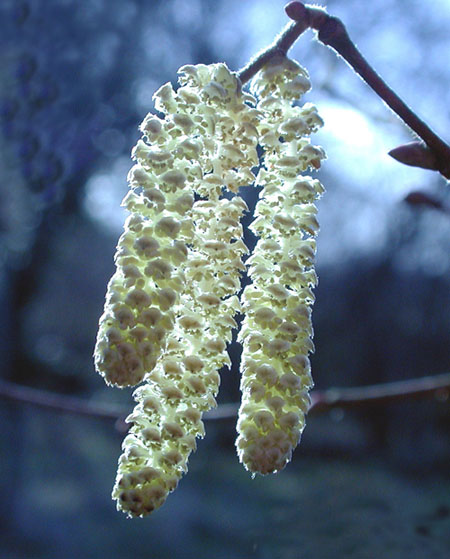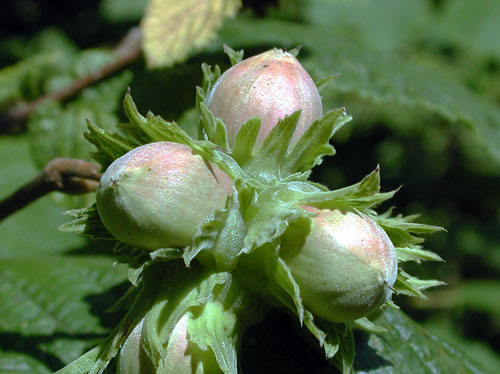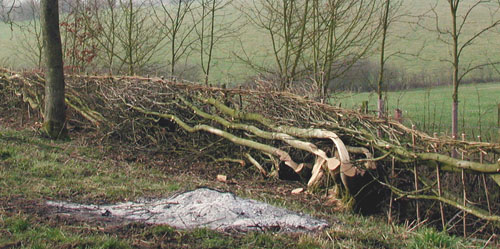
Catkins or lambs'- tails in January
FLOWER OF THE MONTH - JANUARY 2008
(Home)
HAZEL (Corylus avellana)

Catkins or lambs'- tails in January

Hazel nuts in early autumn.
It is not always recognised that all trees and shrubs, without exception, bear flowers. Sometimes the flowers are small or otherwise insignificant; sometimes, as in the case of the hazel, the flowers, although quite conspicuous, are not recognised as such. The catkins, or "lambs'- tails", are in fact the male flowers. The hazel is monoecious, bearing flowers of both sexes on the same tree; the female ones are small, with red styles. The nuts, also known as cobnuts or filiberts, are a favourite autumn food of squirrels as well as humans.
The hazel is one of our longest-established native trees, and is widely spread in hedges and open woodland. It may be seen in the Pocket Park and Sulgrave Wood. It will grow to perhaps 30 feet, but is more usually found as a many-stemmed shrub. It was very often coppiced in the past - that is, cut down to ground level, at regular intervals - to produce long straight poles; there has been a recent revival of this process. The poles may be easily split lengthways and bent at sharp angles without breaking. Since pre-historic times, the split canes have been used to make wattle, for hurdles, fencing and the basis of "wattle and daub" house walls. The rods may also be used as pea or bean sticks, and they are an important material for various country crafts: for pegging down thatch, in traditional hedge laying and for carved walking sticks, for example. Hazel twigs are the usual tool of the water diviners - is there no end to the usefulness of this tree?

Newly laid hedge alongside Moreton Road, showing
hazel sticks used as stakes.

Hazel sticks used in a thatching demonstration at Sulgrave Manor.

Hazel sticks being used in a hurdle making demonstration
at Sulgrave Manor.
Text by George Metcalfe. Photos by Colin Wootton.